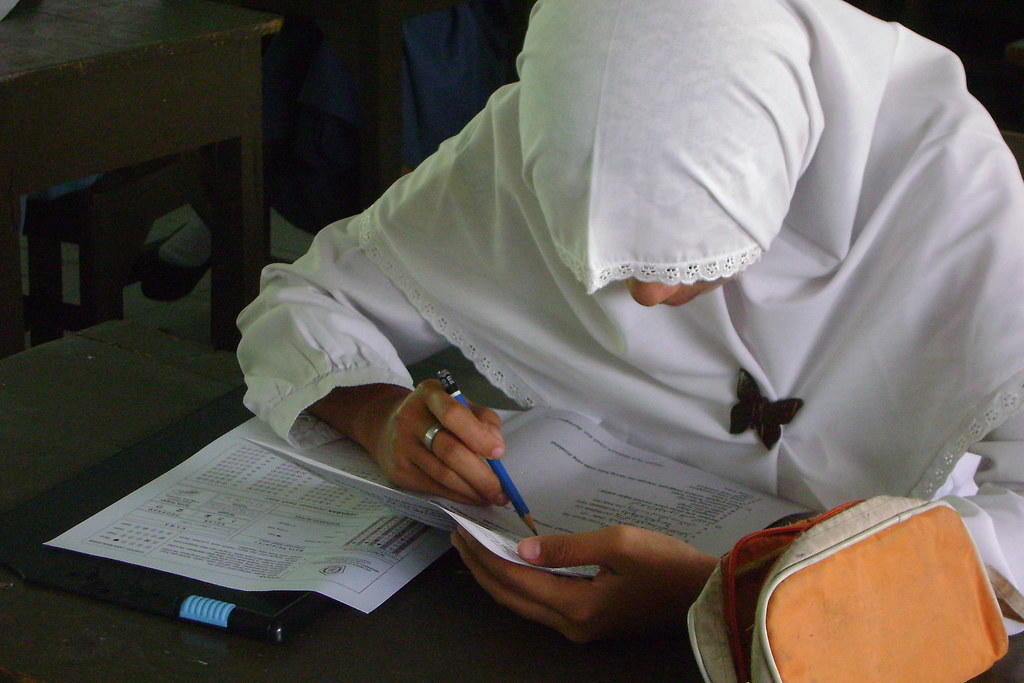Students widely choose STPM Economics due to its relevance and significance. Achieving success in this subject requires a comprehensive understanding of various economic factors. While scoring well in Economics can be challenging, it is certainly attainable with the right approach. Concentrating on fundamental concepts and principles is essential to succeeding in this subject. We have identified critical points to assist you in preparing for this subject, focusing on subject structure and marking scheme, thereby ensuring that you are thoroughly prepared to attain your academic goals.

Exam Details & Paper Structure
This section will give you the overview you will need in order for you to prepare accordingly for your examination.
Semester 1
- Paper code/name: 944/1 Ekonomi 1
- Duration of assessment: 2 hours
- Type of assessment: Written
- Marks: 80
- Overall percentage of assessment: 32%
- Sections:
Part A - 20 multiple-choice questions
Part B - 4 out of 6 essay questions
Part C - 2 out of 3 quantitative questions
The topics for this semester will be based on Microeconomics.
Semester 2
- Paper code/name: 944/2 Ekonomi 2
- Duration of assessment: 2 hours
- Type of assessment: Written
- Marks: 80
- Overall percentage of assessment: 32%
- Sections:
Part A - 20 multiple-choice questions
Part B - 4 out of 6 essay questions
Part C - 2 out of 3 quantitative questions
The topics for this semester will be based on Macroeconomics.
Semester 3
- Paper code/name: 944/3 Ekonomi 3
- Duration of assessment: 1 hour
- Type of assessment: Written
- Marks: 80
- Overall percentage of assessment: 16%
- Sections:
Part A - 5 out of 6 essay questions
Part B - 1 out of 2 quantitative questions
The topics for this semester will be based on Malaysian Economics.
- Paper code/name: 944/4 Ekonomi 4
- Duration of assessment: Entire semester 3
- Type of assessment: Coursework
- Marks: 50
- Overall percentage of assessment: 20%
If you would like to view the complete list of topics for every semester, check out An Overview of STPM Economics.
How to Score A for STPM Economics?
It is best to have some strategies when it comes to your STPM Economics examination. We have listed some tips and tricks that can help you retain what you have learnt as well as prepare you for your Economics examinations.
Preparing Your Own Notes
One of the best and proven ways to help you study is by preparing your own notes. Always make sure you have a pen and a notebook every time when your teacher teaches you in class. This is the first step in learning to take your own notes. One of the main reasons we tell you to do this is because when you take notes during a class, you will have no choice but to concentrate on what is being taught.
Another reason to prepare your own notes is that they give you an overview of what is important and what should be concentrated on. When you prepare notes based on your understanding, you are directly highlighting important concepts and theories. This is extremely important for a subject like economics, where the concepts and theories make up the fundamentals of what you will be studying throughout your upper secondary education.
Get All the Help You Need
If you are taking STPM, you are likely in a school with a typical classroom setting. Typically, there are more than 20 to 30 students in a class, making it extremely difficult for teachers to pay attention to each student individually. Since we all learn differently, a typical classroom setting might not be suitable for everyone.
It is always important for you to look at resources outside of your classroom. This can be done by studying yourself using the resources available in libraries or online, or you can also opt to hire a Superprof tutor to guide you in your economics subject.
Simply attending classes is insufficient, and you, as a student, should grab the chance to learn and use the resources available.

Practise Mock Examinations
When you have learned all the concepts, theories, and syllabi set out in each semester, you should then start to practise past year questions and have mock examinations yourself. It is easy to do so. Just say you have finished your Semester 1 Microeconomics syllabus. All you need to do is sit in your room or the library. The place has to be quiet, so set the timer for 2 hours and sit for one of the past year's questions. The aim is to mimic an actual examination. Answer the questions to the best of your abilities within the two hours and then check them against the answers. By doing this, you achieve three things. First, you are testing your knowledge of what you have studied. The second is you are actually preparing yourself mentally for the upcoming examination. Finally, you are familiarising yourself with the STPM economics exam format.
Common Mistakes to Avoid
When you are trying to improve in your economics examination, it is more common to find advice on strategies, but most people forget that knowing what to avoid is equally important. Here are a few common mistakes students tend to make when they sit for their STPM Economics examination.
Not Understanding the Question
STPM is an important examination that aims to prepare students for university-level education by developing their critical thinking skills. Many students often overlook the importance of carefully reading and understanding the questions in their examinations, which can lead to mistakes. This emphasis on critical thinking distinguishes STPM from SPM and lower-level examinations.
When students are feeling nervous or pressed for time, they often rush through reading the questions without being mentally prepared. This approach can have negative consequences on their hard work and grades. Rushing may cause them to overlook crucial details that examiners anticipate seeing in their responses.
Answer Not According to the Marks Allocated
One of the most important tips is to identify how long your answer should be based on the marks allocated to each question. For example, spending a full page on two-mark questions is just a waste of time, which can be spent on questions that are allocated more marks.
To avoid making mistakes, students should make an effort to attempt as many practice questions as possible using previous years' question papers. By doing so, they can gain valuable experience in determining what and how much to write for each question based on the marks allocated. Additionally, creating their own mock exams can significantly improve their time management skills, better preparing them for the actual exam.
Incomplete Sketching of Graphs
As you learn Economics in your STPM, you will learn the importance of graphs and how they make up a big part of understanding economics. Therefore, it is not a surprise that in examinations, students will be given questions that require them to not only understand but also sketch and draw graphs. One of the biggest mistakes students tend to make with this is missing out on certain criteria or incorrect labelling of graphs.
Students often make careless mistakes because they feel rushed or stressed during exams. It's crucial for them to take their time and be meticulous when drawing and labelling graphs. This attention to detail is necessary to prevent any omissions that could result in unnecessary mark deductions.

Incorrect Term and Definition
There are many terms, concepts, and definitions in economics. Macroeconomics will have different terms, concepts, and definitions than microeconomics. It is easy to make mistakes, especially since so many of them exist.
So how do you avoid them? Understanding the concepts of economics is more beneficial than simply memorising them. By grasping each aspect of economics, you build a strong foundation in the subject. Without this, chances are high that you will confuse the terms and concepts. One great way to build your economic foundation is by watching videos and understanding what you are hearing, watching and reading. As time progresses, your efforts will pay off as you nail every question during your examination.
What You Need to Know About Your Coursework
Coursework listed in the STPM Economics syllabus as Kerja Kursus is a compulsory assessment for this subject. Let's examine the coursework in more detail so that students know what to expect and how to score in this assessment.
The main reason coursework is included in this subject is so that students are not only aware of current economic issues but also have the ability to analyse and apply what they have learnt, including concepts and theories related to these issues. This coursework enables students to enhance their skills in this subject.
This section of the assessment not only tests students on their soft skills but also their cognitive abilities.
Students will be given two themes, which will be announced at the beginning of their third semester. Students will have to pick one theme and prepare their coursework based on the questions given. The students are given the entire semester for this coursework, so they should aim to score the best they can. This coursework carries a total mark of 50, which makes up 20% of their overall grade.
Finding the right tutor can make a significant difference in mastering subjects such as Economics. On Superprof, there are experienced tutors ready to provide personalised assistance to help you excel and reach your academic goals in Economics. It does not matter which part of Malaysia you come from; Superprof has a tutor who will be a perfect match for you. With our easy interface, which is easy to navigate, you will surely be able to find a tutor that fits your budget and who will be best suited for you and your learning abilities.














